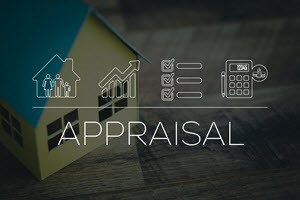If you’re planning to buy a new home with a mortgage, one of the most important steps in the process is the appraisal. The appraisal determines the value of the home and ensures that the lender is not lending more money than the property is worth. However, sometimes the appraisal can come in below the sales price, leaving home buyers in a difficult situation. In this post, we will discuss the top 5 options available to home buyers who are getting a mortgage and find themselves in this situation. By understanding these options, you can make an informed decision and ensure that your home buying journey goes as smoothly as possible.
If you’re a home buyer getting a mortgage, it can be frustrating to find out that the appraisal for the new home purchase has come in below the sales price. This can create a difficult situation, but there are options available to help you overcome it.
But first: How to prepare for an appraisal:
- Clean and declutter the home: A tidy and clutter-free home can create a positive impression on the appraiser.
- Complete necessary repairs: Make any necessary repairs to the home, including fixing leaky faucets, broken windows, or damaged walls. The condition of the home can affect its appraisal value.
- Highlight any upgrades: If you’ve made any upgrades to the home, such as installing new appliances or renovating a bathroom, be sure to let the appraiser know.
- Provide information on the neighborhood: Share information on the neighborhood, such as its amenities and schools, to help the appraiser understand the value of the home in its location.
Factors that can affect the appraisal value of a home:
- Location: The location of the home can have a significant impact on its value. Factors such as proximity to schools, shopping, and transportation can increase the value of the home.
- Size and condition: The size and condition of the home are key factors in its appraisal value. Homes that are larger and in better condition generally have a higher appraisal value.
- Upgrades and renovations: Upgrades and renovations, such as updated kitchens and bathrooms or new flooring, can increase the appraisal value of a home.
- Comparable sales: Appraisers will look at comparable sales in the area to determine the value of a home. If there are recent sales of similar homes in the area, this can help determine the appraisal value of the home.
By understanding these factors and taking steps to prepare for an appraisal, you can increase the chances of receiving a favorable appraisal value for your home.
If the appraisal does come in below the sales price, here are the top 5 options to consider if you find yourself in this situation:
- Negotiate with the seller: As a home buyer, you can negotiate with the seller to lower the price of the home to match the appraised value. This is the most common option.
- Make a larger down payment: Another option is to increase your down payment to make up the difference between the sales price and the appraised value.
- Order a new appraisal: If you feel that the appraisal is inaccurate, you can request a new appraisal from a different appraiser.
- Walk away from the deal: If the seller is unwilling to negotiate and you are unable or unwilling to make a larger down payment, you can choose to walk away from the deal.
- Renegotiate the terms of the loan: You can try to renegotiate the terms of the loan with the lender, such as the interest rate or length of the loan.





